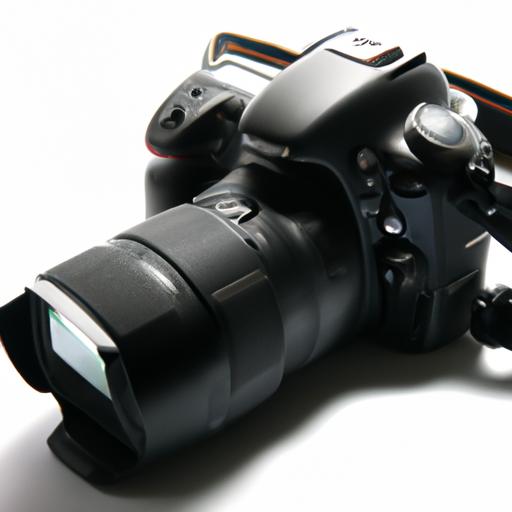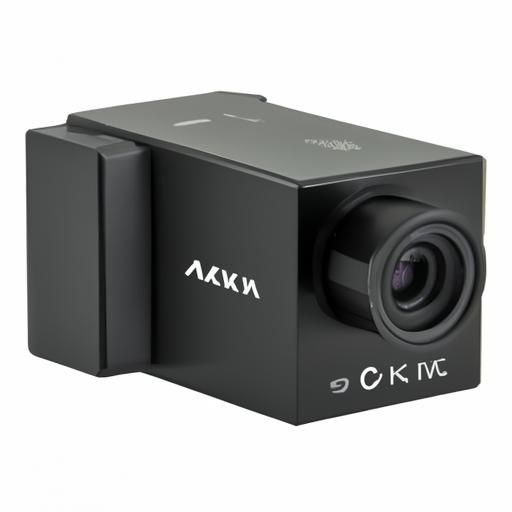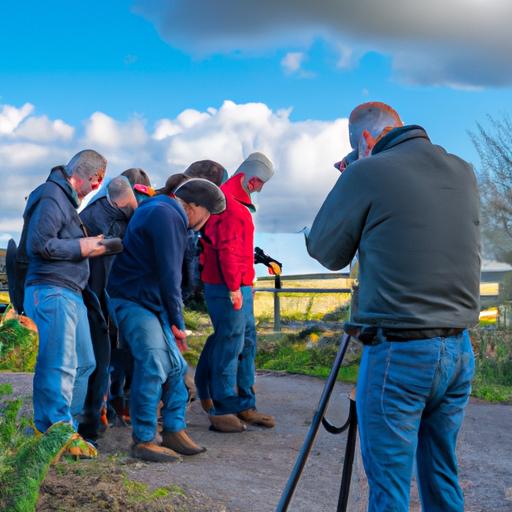Introduction
Have you ever marveled at breathtaking photographs and wondered how they were captured with such precision and clarity? The answer lies in the powerful tool known as a digital SLR camera. These cameras have gained immense popularity among beginners, serving as a stepping stone into the captivating world of photography. As a novice, selecting the right digital SLR camera is of utmost importance, as it can significantly impact your learning experience and overall progression.
Digital SLR cameras, or DSLRs, combine the cutting-edge technology of digital imaging with the versatility of single-lens reflex (SLR) systems. This fusion results in a powerful and intuitive device that enables beginners to capture stunning photographs effortlessly. Unlike their point-and-shoot counterparts, DSLRs offer superior image quality, manual controls, and interchangeable lenses, granting users complete artistic control over their shots.
Selecting the right digital SLR camera is crucial for beginners, as it sets the foundation for their photographic journey. A well-suited camera can enhance the learning process, allowing for seamless exploration and experimentation. On the other hand, an ill-fitting camera can hinder progress, leading to frustration and limited growth.
To embark on your photography expedition, it is essential to understand the intricacies of digital SLR cameras, weigh your options diligently, and choose the perfect companion tailored to your needs. In the following sections, we will delve into the fundamentals of DSLRs, elucidate the factors you should consider before making a purchase, and introduce you to the top digital SLR cameras ideal for beginners. So, let’s embark on this captivating journey together and unlock the world of limitless creativity that awaits!
Understanding Digital SLR Cameras
Exploring the World of Digital SLR Cameras
Digital SLR cameras are the epitome of technological innovation in the realm of photography. These advanced devices combine the convenience of digital imaging with the precision and control of traditional SLR systems. The result? A powerful tool that unleashes your creative potential and captures stunning images with exceptional clarity.
Key Features of Digital SLR Cameras
Digital SLR cameras boast an array of impressive features that set them apart from other camera types. Let’s explore a few key features that make them a top choice for beginners:
High-Quality Image Sensors
Digital SLR cameras are equipped with large image sensors, allowing for enhanced light sensitivity and improved image quality. With these sensors, you can capture sharp and detailed photographs, even in challenging lighting conditions.
Interchangeable Lenses
One of the most significant advantages of digital SLR cameras is their compatibility with interchangeable lenses. This feature provides unparalleled versatility, enabling you to select the perfect lens for various shooting scenarios. Whether you want to capture stunning landscapes, close-up portraits, or distant wildlife, the ability to swap lenses gives you the freedom to experiment and achieve your desired results.
Manual Controls
Digital SLR cameras offer extensive manual controls, allowing you to fine-tune settings such as shutter speed, aperture, and ISO. These controls empower you to have complete creative control over your photographs, enabling you to capture your vision with precision and artistry.
Advantages of Using Digital SLR Cameras for Beginners
As a beginner in the world of photography, using a digital SLR camera provides numerous advantages that can expedite your learning process and elevate your skills:
Enhanced Image Quality
Digital SLR cameras produce images of exceptional quality due to their larger image sensors and advanced technology. With higher resolution and improved noise reduction capabilities, your photos will showcase vivid colors, rich details, and stunning clarity, setting you on a path to excellence right from the start.
Manual Control for Artistic Expression
Digital SLR cameras grant you full control over the exposure settings, allowing you to experiment with different techniques and unleash your creativity. By mastering manual controls, you can manipulate depth of field, freeze fast-moving subjects, or create beautiful long-exposure shots. These options provide endless possibilities for artistic expression and enable you to capture images that truly reflect your unique perspective.
Learning Platform for Advanced Photography
Investing in a digital SLR camera as a beginner sets a solid foundation for future growth. These cameras offer room for progression, allowing you to expand your skills and delve into more advanced techniques as you become more comfortable with the basics. With a DSLR, you can explore areas such as astrophotography, macro photography, and portrait photography, pushing the boundaries of your creativity.
Understanding the fundamental aspects and advantages of digital SLR cameras is crucial for beginners. Armed with this knowledge, you can now delve deeper into the factors to consider before purchasing a DSLR camera tailored to your needs. So, let’s continue our exploration and ensure you make an informed decision!
Factors to Consider Before Buying
Budget Considerations for Beginners
When venturing into the world of photography, it’s essential to establish a realistic budget that aligns with your financial capabilities. Digital SLR cameras come in a wide range of prices, catering to different budgets. As a beginner, it’s advisable to opt for an entry-level DSLR that strikes a balance between affordability and functionality. These cameras offer a solid foundation for learning and experimentation without breaking the bank.
Consider not only the initial cost of the camera body but also the additional expenses that come with building a photography kit. Accessories such as lenses, memory cards, tripods, and camera bags should be factored into your budget as well. By setting a clear budget from the outset, you can make informed decisions and avoid overspending.
Camera Body Features to Look For
The camera body is the heart of your digital SLR setup, and it’s crucial to choose one that suits your needs and preferences. Here are some key features to consider:
-
Sensor Size: The size of the image sensor impacts image quality and low-light performance. Entry-level DSLRs typically come with APS-C-sized sensors, which strike a balance between affordability and image quality.
-
Megapixel Count: While megapixels aren’t the sole determinant of image quality, they do play a role in the level of detail captured. For beginners, a camera with a resolution between 18-24 megapixels is more than sufficient.
-
Autofocus System: Look for a DSLR with a reliable autofocus system that offers multiple focus points. This enables you to track moving subjects and capture sharp images with ease.
-
ISO Range: A wide ISO range allows for shooting in various lighting conditions without compromising image quality. Look for a camera that offers a broad ISO range and performs well at higher ISO settings.
Lens Options and Compatibility
One of the advantages of DSLRs is their ability to interchange lenses, providing endless creative possibilities. When choosing a camera, it’s important to consider the available lenses and their compatibility. Different lenses serve different purposes, such as wide-angle lenses for landscapes, telephoto lenses for capturing distant subjects, and prime lenses for low-light or portrait photography. Ensure that the camera you select has a wide range of compatible lenses, so you can expand your photographic horizons as you progress.
By taking budget considerations into account, understanding essential camera body features, and evaluating lens options and compatibility, you can make an informed decision when purchasing your first digital SLR camera. Remember, choosing the right camera is an investment in your photography journey, setting the stage for growth and creative exploration. So, let’s proceed to the next section and explore some of the top digital SLR cameras tailored for beginners.
Top Digital SLR Cameras for Beginners
Review of Popular Digital SLR Camera Models
When it comes to choosing a digital slr camera for beginners, the market offers a plethora of options. To help you make an informed decision, let’s explore some of the top-rated models that cater specifically to novice photographers.
1. Canon EOS Rebel T7i
The Canon EOS Rebel T7i is a remarkable choice for beginners seeking exceptional image quality and user-friendly features. With its 24.2-megapixel sensor and advanced autofocus system, this camera delivers stunningly detailed photographs. Its intuitive interface and Guided Mode make it easier for newcomers to navigate through various settings and unleash their creativity.
2. Nikon D3500
The Nikon D3500 is renowned for its excellent image quality and ergonomic design, making it an excellent option for beginners. Equipped with a 24.2-megapixel sensor and an impressive battery life, this camera allows for extended shooting sessions without interruption. Its user-friendly interface and helpful Guide Mode enable beginners to learn and experiment with different settings effortlessly.
Comparison of Key Features, Image Quality, and Ease of Use
When comparing digital SLR cameras for beginners, several factors need to be considered. Key features, image quality, and ease of use are among the most crucial aspects to assess.
In terms of key features, it is important to evaluate factors such as sensor resolution, autofocus capabilities, and connectivity options. A higher resolution sensor allows for sharper and more detailed images, while advanced autofocus systems ensure accurate focus and tracking of subjects. Additionally, seamless connectivity options like Wi-Fi and Bluetooth enable hassle-free sharing and remote control of the camera.
Image quality is a paramount consideration for any aspiring photographer. Look for cameras with a wide dynamic range and low noise performance, as these attributes contribute to capturing vibrant colors and sharp details, even in challenging lighting conditions.
Pros and Cons of Each Recommended Camera
While each digital SLR camera for beginners has its own strengths, it is essential to consider the pros and cons of each model to find the perfect fit for your needs.
-
Canon EOS Rebel T7i:
- Pros: Exceptional image quality, user-friendly interface, advanced autofocus system.
- Cons: Slightly higher price range, limited video shooting capabilities.
-
Nikon D3500:
- Pros: Excellent image quality, ergonomic design, long battery life.
- Cons: Limited connectivity options, lack of touchscreen functionality.
By carefully assessing the features, image quality, and ease of use of these top digital SLR cameras, you can confidently choose the one that aligns with your preferences and kickstart your photography journey with a reliable and capable companion.
Tips for Using a Digital SLR Camera as a Beginner
Basic Photography Techniques for Beginners
As a beginner in the realm of DSLR photography, it’s essential to grasp some fundamental techniques that will set the stage for your creative journey. Let’s explore a few key practices that can elevate your skills and help you capture stunning images:
-
Mastering Exposure: Understanding exposure is crucial for achieving well-balanced and properly lit photographs. Experiment with the exposure triangle, which consists of aperture, shutter speed, and ISO settings. Learn how each component affects your image and practice finding the perfect balance.
-
Focusing Techniques: Achieving sharp focus is vital for creating professional-looking photographs. Experiment with autofocus and manual focus modes to determine which works best for your subject. Explore various focusing techniques, such as single-point focus or continuous focus, to capture moving subjects with precision.
-
Composition Principles: Composition plays a vital role in creating visually pleasing images. Familiarize yourself with the rule of thirds, leading lines, and symmetry to add depth and interest to your shots. Experiment with different perspectives and angles to create unique compositions that tell a story.
Understanding Camera Settings and Modes
To fully harness the capabilities of your digital SLR camera, it’s crucial to comprehend the various settings and modes at your disposal. Here are some key settings and modes to explore:
-
Aperture Priority (Av/A): This mode allows you to control the aperture setting while the camera automatically adjusts the shutter speed for proper exposure. It’s ideal for controlling depth of field, especially in portrait or landscape photography.
-
Shutter Priority (Tv/S): In this mode, you have control over the shutter speed while the camera adjusts the aperture. It’s useful for capturing motion, whether freezing fast-action scenes or creating intentional motion blur.
-
Manual Mode (M): Manual mode provides complete control over both the aperture and shutter speed settings. It offers maximum flexibility and creative freedom, allowing you to experiment and fine-tune your exposure settings.
Composition and Framing Tips
Composing your shots effectively can transform an ordinary photograph into an extraordinary one. Consider the following tips to enhance your composition skills:
-
Rule of Thirds: Divide your frame into a grid of nine equal sections by imagining two vertical and two horizontal lines. Position your main subjects or points of interest along these lines or at their intersections to create a visually balanced composition.
-
Leading Lines: Utilize natural or man-made lines within your frame to guide the viewer’s eye towards the focal point. Leading lines can be roads, fences, rivers, or any other element that creates a sense of depth and movement in your image.
-
Negative Space: Experiment with negative space, the empty areas surrounding your subject, to create a sense of simplicity and focus. Embracing negative space can add drama and emphasize the main subject.
By honing these techniques, understanding camera settings and modes, and implementing effective composition principles, you’ll soon find yourself capturing images that evoke emotions and leave a lasting impression. So, grab your digital SLR camera and embark on a journey of discovery and self-expression through the lens!
Conclusion
In conclusion, choosing the right digital SLR camera for beginners is a critical step towards mastering the art of photography. With their advanced features, superior image quality, and versatility, DSLRs provide the perfect platform for honing your skills and capturing mesmerizing moments.
Throughout this article, we have explored the significance of selecting a suitable digital SLR camera. We discussed the defining characteristics of DSLRs and their popularity among beginners. We also highlighted the importance of considering factors such as budget, camera body features, and lens options before making a purchase.
Additionally, we provided a comprehensive list of top digital SLR cameras that cater specifically to beginners’ needs. By comparing their key features, image quality, and ease of use, you can make an informed decision and find the perfect companion for your photography journey.
Remember, as a beginner, your digital SLR camera is your gateway to unlocking your creative potential. Embrace the learning process, experiment with different settings and techniques, and allow your passion for photography to flourish. With time and practice, you will witness remarkable growth and capture breathtaking moments that tell your unique story.
So, what are you waiting for? Take the plunge into the world of digital SLR cameras and embark on an incredible adventure filled with stunning visuals and endless artistic possibilities. Unleash your creativity, capture the beauty around you, and let your digital SLR camera be your guide to photography excellence.



